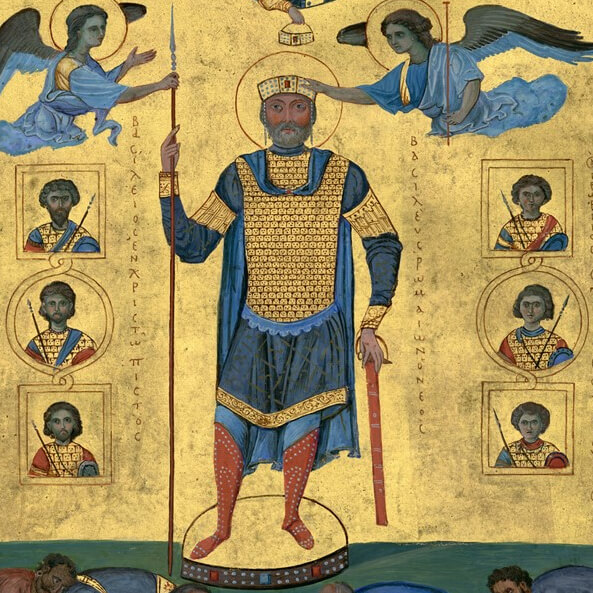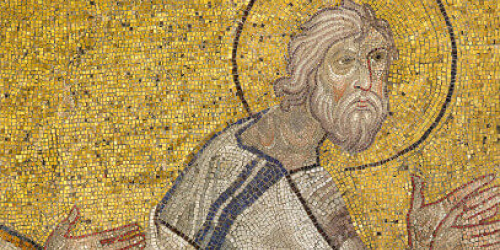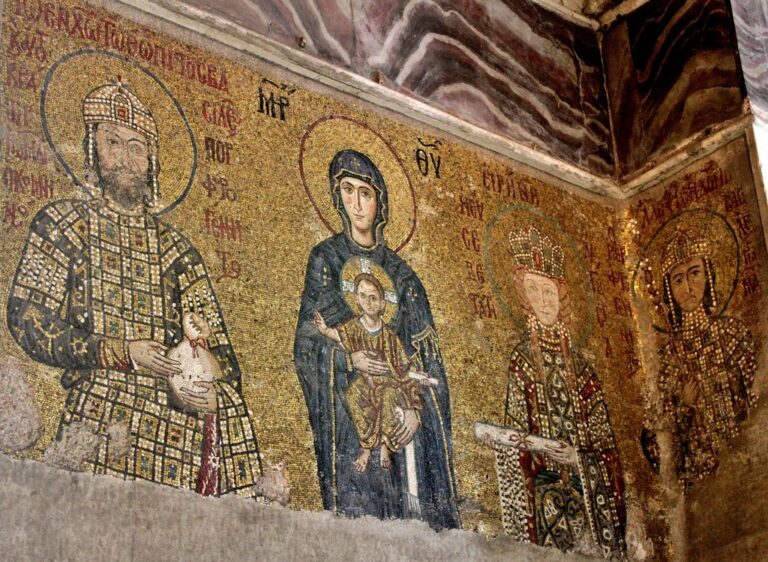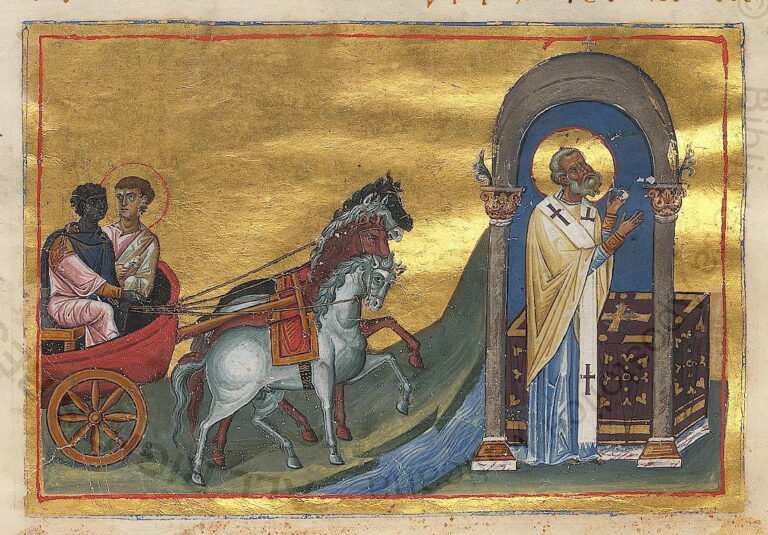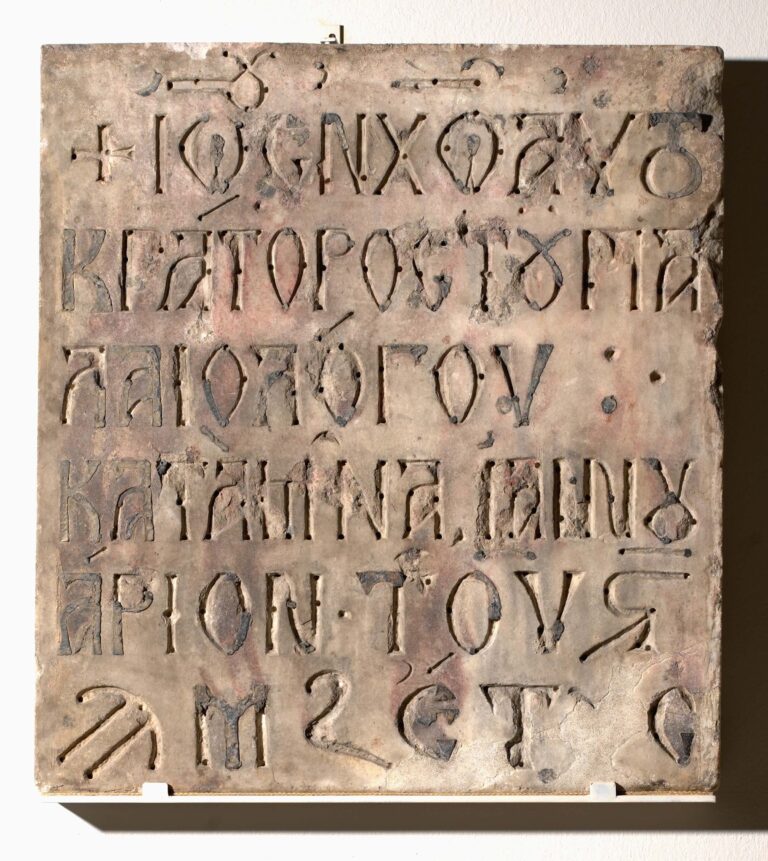The Psalter of Basil II
The Psalter of Basil II is a Byzantine illuminated manuscript created in the early 11th century for Emperor Basil II, one of Byzantium’s most formidable rulers. Known for his military prowess and commitment to consolidating imperial power, Basil II likely commissioned the psalter in Constantinople around 1017-1018, when he achieved a decisive victory over the Bulgarians and made his triumphant return to Constantinople. The manuscript was probably painted in a workshop of the Byzantine capital, visually asserting Basil’s authority and divine mandate as the empire’s protector.
Structure and purpose of the manuscript.
The Psalter of Basil II is structured around the 150 psalms, but it includes several lavish miniatures that go beyond a purely devotional role. It features fourteen full-page illuminations with complex compositions that present Basil as a ruler chosen by God, emphasizing his victories and his role in safeguarding the Byzantine Empire. In addition to the psalms, there is a series of portraits of biblical figures and Byzantine saints, which together reflect Basil’s belief in divine support and guidance in his reign.
This psalter differs from traditional devotional books in that its illustrations emphasize the emperor’s role in maintaining the empire’s stability and its protection from enemies, rather than focusing solely on Christian salvation. Basil likely used the manuscript as a personal item for private prayer, but it also served as a tool of imperial propaganda, reinforcing his image as both a devout Christian and a powerful ruler.
Imperial iconography and themes of power.
The Psalter of Basil II is notable for its depiction of the emperor in a full-page triumphal image that connects his military achievements with divine approval. The most prominent miniature in the manuscript shows Basil in full military attire, surrounded by two angels—one holding his spear and the other his crown. At his feet, high-ranking figures are prostrated. Above the scene, Christ holds another crown over the emperor’s head, emphasizing the divine sanction of Basil’s rule.
The manuscript’s artist portrayed Basil’s face in a detailed, almost lifelike manner, creating an unmistakable link between the emperor and biblical kings such as David, who also led his people both spiritually and militarily. The story of David is the subject of another miniature in the psalter.
The Psalter of Basil II is not only an artistic achievement but also a theological one. Its miniature reflects the imperial propaganda of the time and elevate Basil’s status to one of almost saintly reverence. Through its blend of religious and imperial symbolism, the manuscript creates a visual narrative that legitimizes Basil’s rule as divinely inspired, while also reinforcing his reputation as a fierce and disciplined emperor.
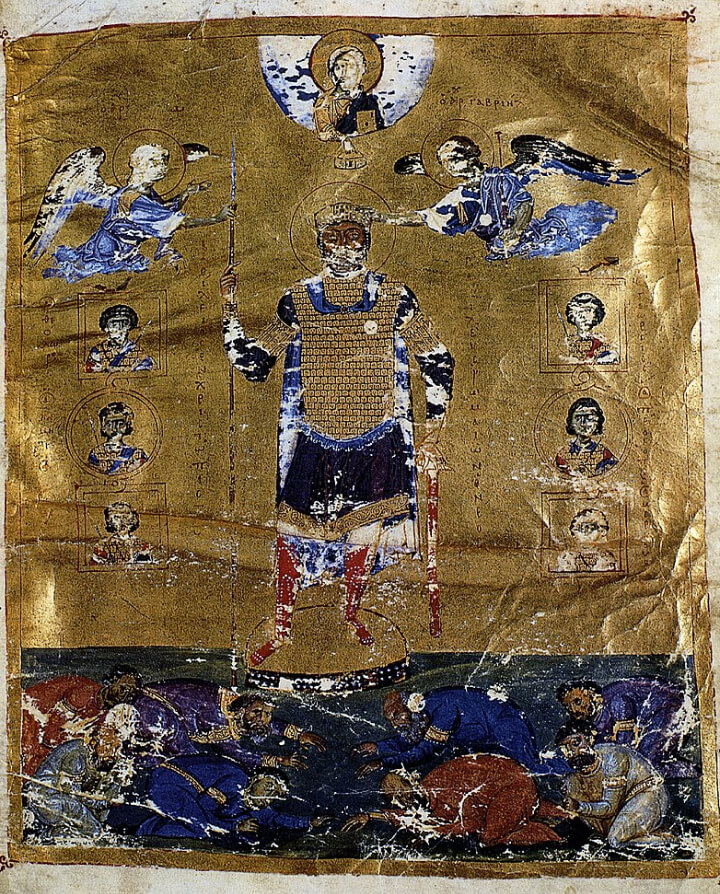 Full-page miniature of the manuscript
Full-page miniature of the manuscript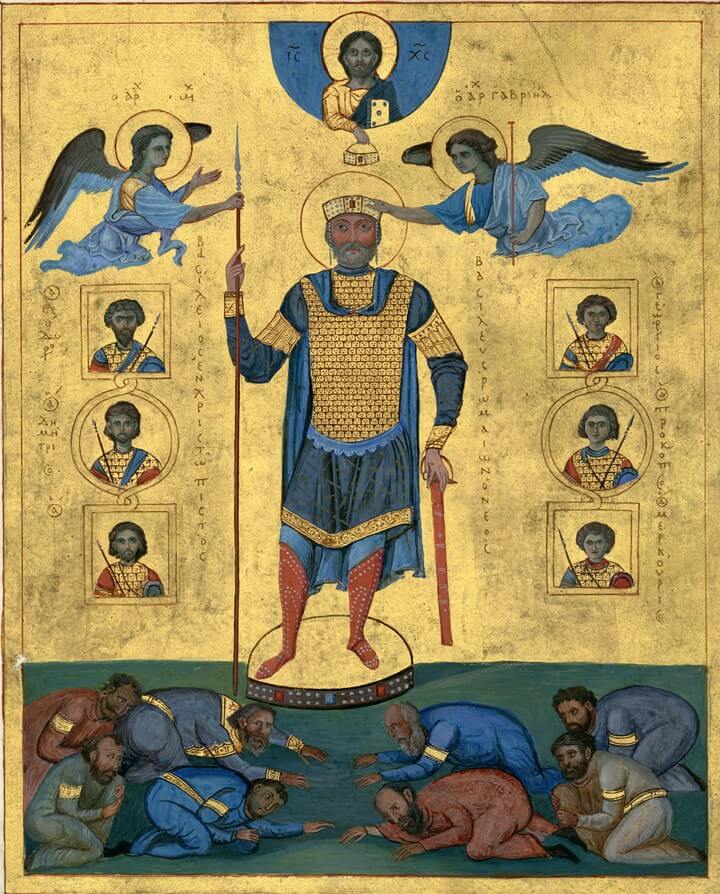 Replica of the miniature
Replica of the miniature
Byzantine artistic style and techniques
The manuscript’s illuminations exhibit the refined artistic style of the Macedonian Renaissance, a period known for a return to naturalistic and classical forms within Byzantine art.
The artists employed shading, perspective, and realistic proportions to create figures with three-dimensional qualities, differentiating this psalter from earlier Byzantine works that adhered to flatter, more iconic styles.
This naturalistic approach, combined with the lavish use of gold and vibrant colors, reflects the high level of craftsmanship associated with the imperial workshop in Constantinople.
 Miniature showing David killing the bear
Miniature showing David killing the bear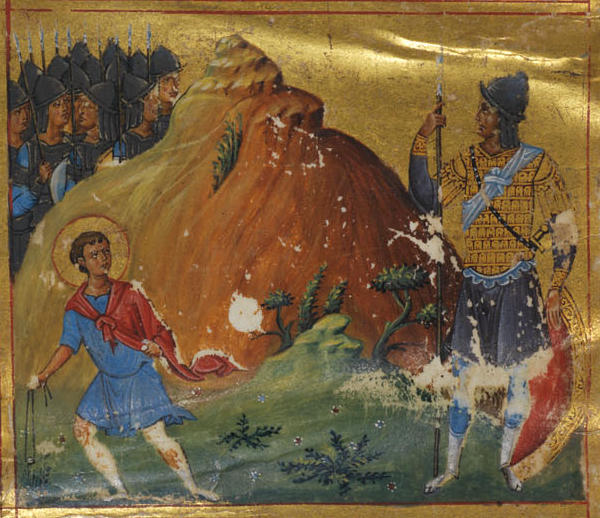 Miniature showing David and Goliath.
Miniature showing David and Goliath.
The historical journey of the Psalter of Basil II.
The psalter was likely used by Basil himself. Its survival over the following centuries is unclear, but by the 14th century, it was housed at the Peribleptos Monastery in Mistra in the Peloponnese, as noted in an annotation on folio 410v. In the next century, it came into the possession of the Latin Patriarch of Constantinople and Cardinal Basilius Bessarion.
In 1468, Bessarion donated this manuscript, along with his entire library, to the city of Venice to establish the Biblioteca Marciana. The Psalter of Basil II is still kept there today (Gr.Z17) and can be viewed online here.
